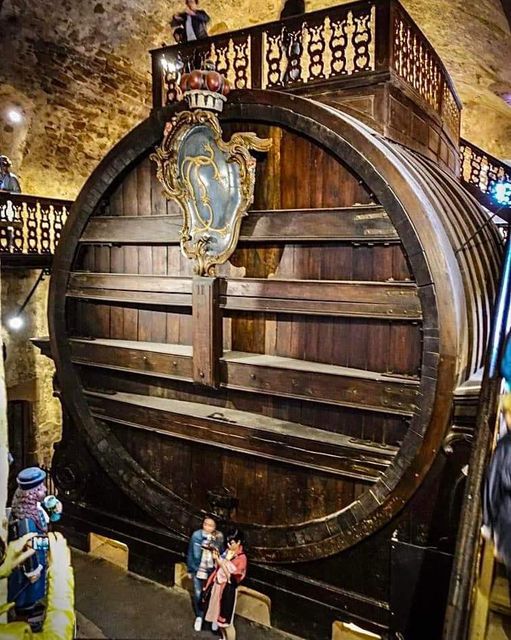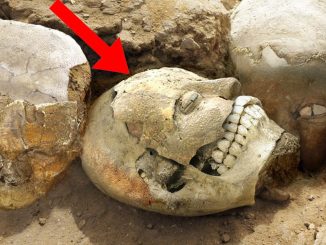
The Great Heidelberg Tun, an extraordinary wine vat housed within the cellars of Heidelberg Castle in Germany, stands as a testament to the region’s rich winemaking history. Constructed in 1751 CE, this colossal vat boasts an impressive capacity of 221,726 litres, making it one of the largest wine barrels in the world. Despite the drying of its wood over time, its current capacity remains an impressive 219,000 litres. The Great Heidelberg Tun is not only a remarkable feat of engineering but also a symbol of the longstanding tradition of winemaking in the region.
A Marvel of Craftsmanship
The construction of the Great Heidelberg Tun required the labor of skilled artisans and the resources of approximately 130 oak trees. Its massive size and intricate design showcase the craftsmanship and ingenuity of the craftsmen who built it. The vat’s immense capacity made it a central feature of the winemaking process at Heidelberg Castle, where it stored vast quantities of wine for consumption and distribution. Over the centuries, the Great Heidelberg Tun has become an iconic symbol of the castle’s storied history and its association with wine production.
Historical Significance and Legacy
Throughout its history, Heidelberg Castle has housed four such colossal wine barrels, each reflecting the importance of winemaking to the region. The Great Heidelberg Tun, in particular, has captured the imagination of visitors and historians alike, serving as a tangible link to the past. As a symbol of wealth and prosperity, the vat exemplifies the lavish lifestyle enjoyed by the nobility of Heidelberg during the 18th century. Its enduring presence within the castle’s cellars continues to fascinate and inspire visitors from around the world.
Preserving Heritage and Tradition
Efforts to preserve the Great Heidelberg Tun ensure that future generations can continue to marvel at its grandeur and historical significance. Conservation initiatives aim to protect the vat from deterioration caused by aging and environmental factors, ensuring that it remains a prominent feature of Heidelberg Castle for years to come. By safeguarding this iconic symbol of winemaking heritage, the people of Heidelberg honor their past and uphold the traditions that have shaped their culture for centuries.
Archaeological Insights: Uncovering the Past
The study of artifacts like the Great Heidelberg Tun provides valuable insights into the cultural and technological achievements of past civilizations. Archaeologists play a crucial role in uncovering and interpreting such artifacts, piecing together the puzzle of history through meticulous research and analysis. By examining the construction techniques and materials used in the vat’s creation, archaeologists can gain a deeper understanding of the craftsmanship and engineering practices of the time. Through continued archaeological exploration, we can continue to unravel the mysteries of the past and preserve our shared heritage for future generations.


